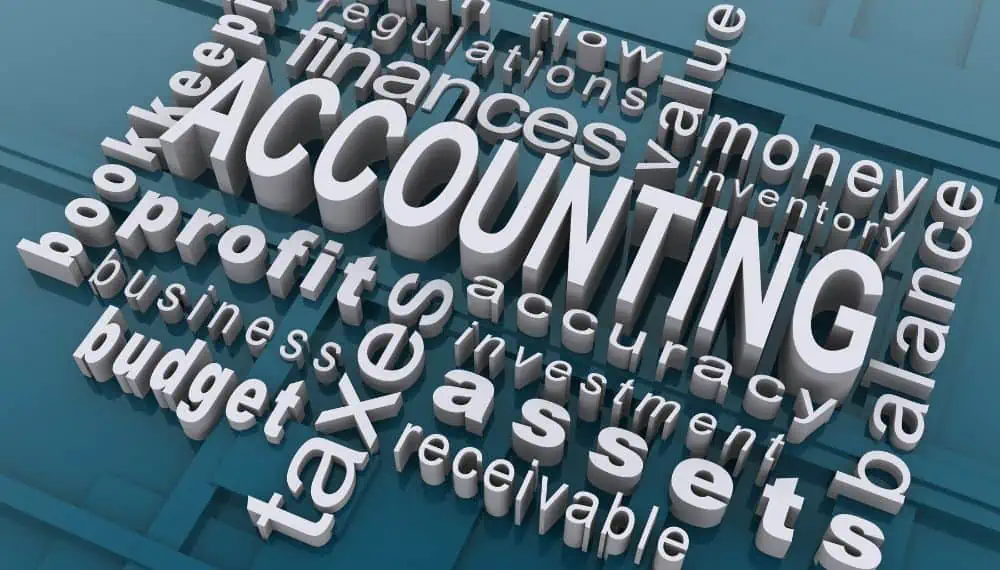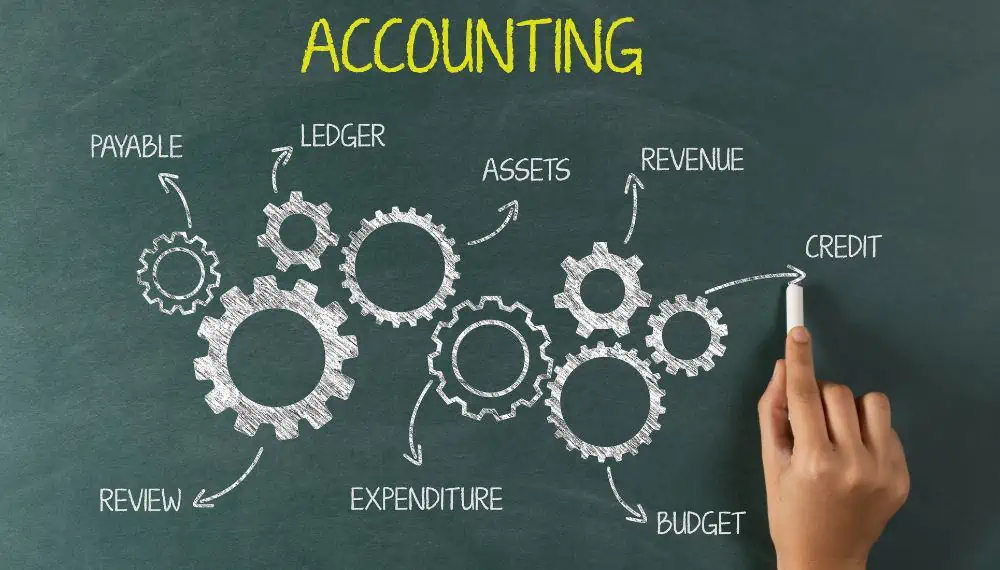As an accountant, you should know these most important 60 accounting terms. Even if you run a business, understanding these terms is important. Our list of important accountant terms will help you understand common terms like balance sheets, depreciation, accruals, and goodwill.
What is Accounting?
Accounting plays an integral role in managing and organizing financial information. It involves examining, summarizing, and reporting transactions to provide an understanding of the financial well-being of individuals or organizations. In simple terms, accounting helps keep track of income and expenses.
Accounting also helps in aiding businesses in making informed decisions in different operational aspects of the business. Accounting helps ensure compliance with tax laws and regulations and provides stakeholders with accurate and transparent financial reports. Accountants utilize tools like balance sheets, income statements, and cash flow statements to present a view of finances.

Furthermore, there are different branches within accounting. Managerial accounting focuses on decision-making processes within a company while financial accounting concentrates on presenting information to external parties such as investors, creditors, or government agencies.
Ultimately accounting acts as the foundation for management, by assisting individuals and businesses in navigating the complex world of money while ensuring stability and growth.
![]() Recommended reading: Understanding the 5 Basic Principles of Accounting
Recommended reading: Understanding the 5 Basic Principles of Accounting
60 Basic Accounting Terms and Their Definitions

Here is a list of 60 fundamental accounting terms, along with their explanations:
- Assets: Assets refer to the resources owned by a company, such as cash, inventory, and property. These resources hold value. Can be utilized to generate future benefits.
- Liabilities: Liabilities represent the debts and obligations that a company owes to parties. This includes loan accounts accrued expenses.
- Equity: Equity is determined as the remaining value of assets after deducting liabilities. It represents the owner’s interest in the business.
- Revenue: Revenue refers to the income earned by a business through its operations, such as sales of goods or services.
- Expenses: Expenses encompass all the costs incurred by a company in order to generate profits, including salaries, rent, utilities and supplies.
- Profit: Profit indicates the difference between expenses and revenues reflecting the earnings made by a company after deducting all costs.
- Loss: Loss represents the difference between expenses and revenue when expenses exceed revenue indicating a deficit for the company.
- Accounts Payable: Accounts refer to amounts owed by a business to its vendors or suppliers, for products or services purchased on credit.
- Accounts Receivable: These are the amounts that customers owe a business for products or services they have received but have not yet paid for.
- Balance Sheet: A financial statement that provides a snapshot of a company’s position at a time by showing its assets, liabilities and equity.
- Income Statement: A financial statement that summarizes a company’s revenue and expenses over a period to indicate its profitability.
- Cash Flow Statement: A financial statement that details the flow of cash in and, out of a business over time including information on operating activities investing activities, and financing activities.
- Depreciation: The process of allocating the cost of assets over their lifespan to account for their wear and tear and subsequent decrease in value.
- Amortization: The reduction in value of assets such as patents, trademarks, and copyrights over time.
- Accruals: Recording. Expenses when they are earned or incurred than when cash is exchanged to ensure proper matching, between income and associated costs.
- Prepaid Expenses: Expenses that are paid in advance but recorded as assets until they are consumed or used up over time.
- Accrual Basis Accounting: Recognizing income and expenses as they occur regardless of transactions will give a realistic financial overview.
- Cash Basis Accounting: Small businesses often choose to record revenue and expenses when cash is received or paid for simplicity.
- General Ledger: A record that includes all transactions of a business, categorized by account and including debits and credits.
- Trial Balance: A summary of all accounts. Their balances are used to verify the accuracy of records ensuring that debits match credits.
- Debits: Entries, on the side of an account that indicate an increase in assets or expenses while on the side for liabilities and equity.
- Credits: Entries on the side of an account indicating an increase in liabilities, equity or revenue while on the side for assets and expenses.
- Journal: A chronological record of transactions that serves as a source for recording entries in the ledger.
- Double Entry Accounting: The practice of recording every transaction with both a debit and credit entry to maintain balance, in the accounting equation.
- Chart of Accounts: refers to a list of all the accounts utilized by a business categorized by their types. It provides a framework, for recording transactions.
- Net Income: It represents the earnings of a company after deducting all expenses from its revenue. It indicates whether the company has made a profit or incurred a loss.
- Gross Income: It refers to the revenue generated by a business before any deductions are made for expenses. It reflects the sales or revenue generated.
- Net Loss: It occurs when a company’s expenses exceed its revenue resulting in a difference between the two figures and indicating deficit.
- Capital: It refers to the investment made by the owner(s) in order to establish and operate a business representing their stake in it.
- Dividends: These are distributions of profits made to shareholders as compensation for their investment in the company.
- GAAP (Generally Accepted Accounting Principles): It denotes guidelines and procedures followed in reporting to ensure consistency and comparability across different entities.
- CPA (Certified Public Accountant): It is an accounting professional who has obtained education passed examinations and gained experience to become licensed for providing public accounting services.
- Audit: An audit involves an auditor examining and verifying records to ensure accuracy and compliance with regulations.
- FASB (Financial Accounting Standards Board): It is an organization responsible for setting accounting standards in the United States and is tasked with offering guidance to accountants and businesses.
- IFRS (International Financial Reporting Standards): refers to accepted accounting standards that have been developed by the International Accounting Standards Board (IASB).
- T Account: It is a representation of a ledger account taking on the shape of a T with debits recorded on the side and credits on the right side.
- Revenue recognition: This involves determining when and how revenue should be acknowledged in statements, based on the transfer of goods or services to customers.
- Fixed assets: These are long-term assets, such as buildings and equipment that are held for productive use within a business and are not intended for sale.
- Current assets: These consist of assets that are expected to be converted into cash or used up within a year. This category includes cash, inventory, and accounts
- Current liabilities: encompass debts that must be settled within a year. Examples include accounts for short-term loans.
- Long-term liabilities: refer to debts that become due after one year. These may include long-term loans and bonds payable.
- Owner’s equity: The residual interest in the assets of the entity after deducting liabilities representing the owner’s financial stake.
- Operating Expenses: These are the day-to-day costs that a business incurs to keep running. They include things like employee salaries, rent, utilities, and office supplies.
- Retained Earnings: Retained earnings refer to the profits that a company reinvests in its operations after paying dividends to shareholders.
- Break Point: The breakpoint is the level of sales at which a company’s total revenue matches its total expenses. It indicates the sales volume needed to cover all costs.
- Working Capital: Working capital is calculated by subtracting a company’s liabilities from its assets. It measures the health of a company in the term.
- Financial Ratios: Financial ratios are tools used to assess a company’s performance and measure its efficiency, liquidity, and profitability.
- Gross Profit Margin: The gross profit margin represents the percentage of revenue that covers the cost of goods sold indicating how profitable a company’s core operations are.
- Net Profit Margin: The net profit margin shows the percentage of profit earned from revenue after deducting all expenses. It provides insights into a company’s profitability.
- Cash Flow: Cash flow refers to the inflow and outflow of cash in a business demonstrating its ability to generate and effectively utilize cash resources.
- Assets: Intangible assets are physical assets such, as patents, trademarks, copyrights, and goodwill.
- Cost of Goods Sold (COGS): The direct expenses associated with the production of goods that a business sells, including the costs of materials, labor, and manufacturing
- Uncollectible Debt: Money owed by customers that is considered unlikely to be collected and is accounted for as an expense to anticipate losses.
- Employee Compensation: The amount paid to employees for their work, which includes wages, salaries, bonuses, and benefits.
- Projected Financial Statements: Financial statements that are based on assumptions and used for forecasting and planning purposes.
- Inventory: Goods held by a business for either sale or production purposes which include materials, work, in-progress items and finished goods.
- Principle of Revenue Recognition: The principle that states revenue should be recognized when it is earned rather than when cash is received in order to align revenue with the provision of goods or services.
- Significance: The importance or impact of information on decision-making processes in determining whether specific items should be disclosed or recorded.
- Account Reconciliation: A process of comparing records to identify any discrepancies or errors, between accounts or statements.
- Balancing the Books: A list containing all accounts along with their balances used to ensure the accuracy of records by verifying that total debits equal credits.
How to Apply These Accounting Terms
Applying accounting terms involves using these concepts in various financial activities and processes within a business. Here are some ways to apply these accounting terms:

Recording Transactions
Utilize the double-entry accounting method to record financial transactions in the general ledger, ensuring each entry is balanced with debits and credits.
Preparing Financial Statements
Use accounting data to create essential financial statements such as the income statement, balance sheet, and cash flow statement.
Analyzing Financial Performance
Calculate and interpret financial ratios like gross profit margin, net profit margin, and current ratio to assess the company’s financial health and performance.
Budgeting and Forecasting
Use historical financial data and pro forma financial statements to create budgets and make financial projections for future periods.
Managing Assets and Liabilities
Monitor and manage assets to optimize their use, track liabilities to ensure timely payments, and assess equity to understand the company’s financial position.
Auditing
Conduct internal or external audits to ensure compliance with accounting standards, identify discrepancies, and provide accurate financial information.
Revenue Recognition
Apply the revenue recognition principle to determine when and how to record revenue, especially for long-term contracts or service agreements.
Depreciation and Amortization
Calculate and record depreciation and amortization expenses to allocate the costs of assets over their useful lives.
Managing Inventory
Use inventory accounting methods like First-In, First-Out (FIFO) or Last-In, First-Out (LIFO) to value and control inventory.
Payroll Management
Accurately calculate and record employee wages, deductions, and benefits, and ensure timely payroll processing.
Managing Cash Flow
Analyze cash flow patterns to ensure the company has enough liquidity to cover expenses and invest in growth opportunities.
Cost Analysis
Track and analyze various costs, such as cost of goods sold (COGS) and operating expenses, to optimize profitability.
Financial Decision Making
Use financial data and analysis to make informed decisions related to investments, financing, and operational strategies.
Compliance and Reporting
Prepare financial reports and statements in accordance with GAAP or IFRS to comply with regulatory requirements and provide transparency to stakeholders.
Managing Intangible Assets
Monitor and assess the value of intangible assets, such as patents and trademarks, and record any amortization or impairment.
Working Capital Management
Analyze working capital to ensure sufficient short-term resources to meet operational needs.
Dividend Policy
Decide on dividend distributions to shareholders based on the company’s profitability and retained earnings.
Tax Planning
Utilize accounting data to plan and optimize tax strategies, ensuring compliance with tax laws and regulations.
Conclusion
By effectively applying these accounting terms, businesses can maintain accurate financial records, make informed decisions, and ensure their financial stability and growth. Professional accountants play a vital role in applying these concepts to handle financial matters and provide valuable insights to business owners and management.

